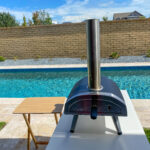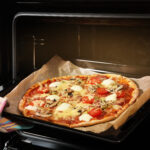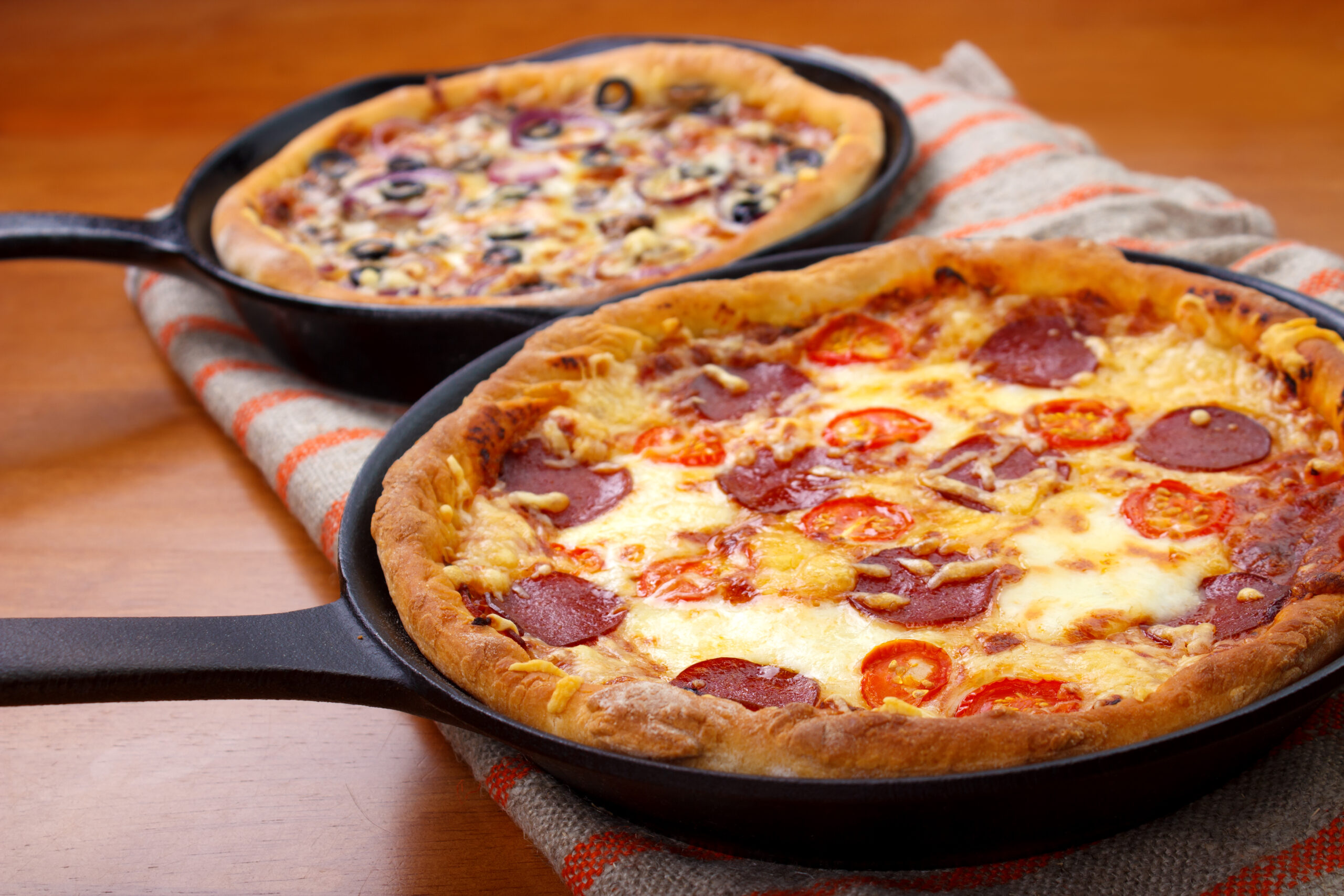Cooking pizza is a fun and delicious activity that many people enjoy. However, not everyone has access to an oven to bake their pizza. This can be a problem for those who want to enjoy a homemade pizza but don’t have the necessary equipment. Fortunately, there are several alternative methods to bake a pizza without an oven.
One option is to use a skillet on the stovetop. This method involves cooking the pizza dough in the skillet until it begins to brown on the bottom, then flipping it over and adding tomato sauce, cheese, and toppings. Another option is to use a countertop electric oven, which is a toaster oven that plugs into any outlet and doesn’t require a gas line connection. Additionally, an air fryer can be used to bake a pizza similar to what you would get in a conventional oven. These methods are easy to follow and can produce delicious results.
Understanding the Basics of Pizza Cooking

Importance of Heat
One of the most critical factors in cooking a delicious pizza is the heat. A traditional brick oven can reach temperatures of up to 900°F (480°C), which is why pizzas cooked in these ovens have a crispy crust and perfectly melted cheese. However, not everyone has access to a brick oven, so it’s essential to understand how to replicate the high heat required for a great pizza.
When cooking pizza without an oven, the heat source should be as close to the pizza as possible. Some of the best options include a countertop electric oven, a stovetop, a grill, or even an air fryer. Each of these methods has its unique pros and cons, so it’s essential to choose the best one for your needs.
Role of Ingredients
The ingredients used in making pizza play a crucial role in the final product’s taste and texture. The dough, sauce, and toppings should be carefully selected and prepared to ensure that the pizza is delicious.
When making pizza dough, it’s essential to use the right type of flour, yeast, and water. The flour should have a high protein content, which will help the dough rise and create a crispy crust. The yeast should be fresh and active, and the water should be lukewarm to activate the yeast.
The sauce should be made with high-quality tomatoes, herbs, and spices. The toppings should be fresh and flavorful, and the cheese should be of good quality and melt easily.
By understanding the importance of heat and the role of ingredients, you can create a delicious pizza without an oven. With a little bit of creativity and experimentation, you can find the perfect combination of heat and ingredients to make a pizza that your family and friends will love.
Preparation Before Cooking
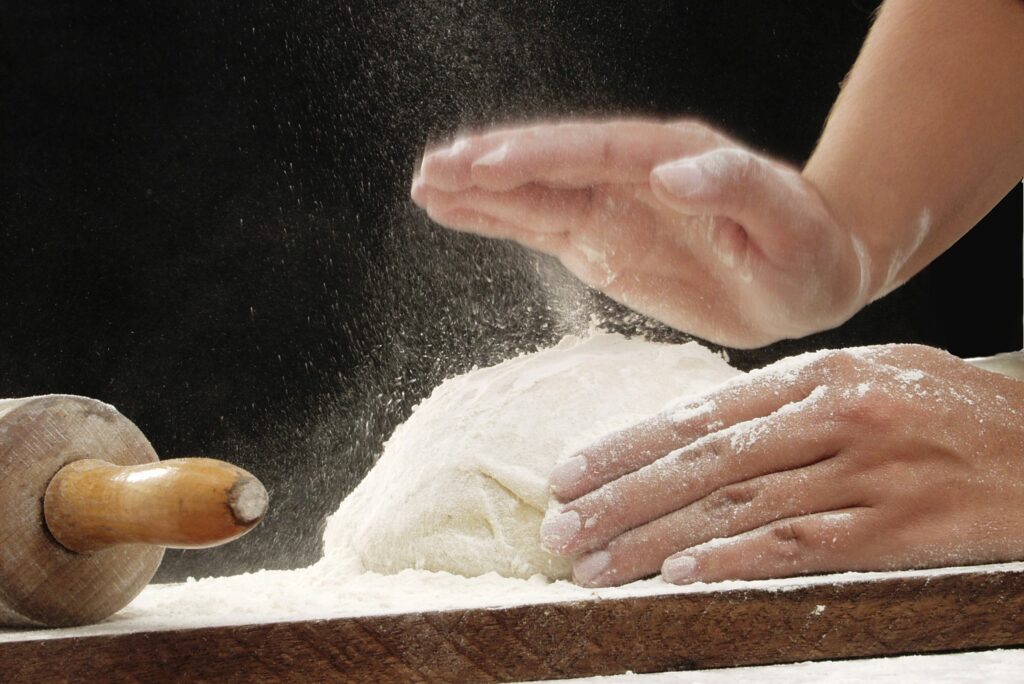
Before you can cook a pizza without an oven, there are a few important steps you need to take to prepare your ingredients. In this section, we will cover the three main steps: Dough Preparation, Topping Selection and Preparation.
Dough Preparation
The dough is the foundation of your pizza, so it’s important to get it right. There are many different recipes for pizza dough, but most involve a combination of flour, yeast, water, salt, and sugar. You can make the dough by hand or use a stand mixer with a dough hook attachment to save time.
Once you have mixed your dough, you will need to let it rest and rise. This usually takes around an hour, but it can vary depending on the recipe and the temperature of your kitchen. Be sure to cover the dough with a damp cloth or plastic wrap to prevent it from drying out.
Topping Selection and Preparation
The toppings you choose can make or break your pizza, so it’s important to choose them wisely. Some popular options include tomato sauce, cheese, vegetables, and meat. You can also get creative and experiment with different flavors and textures.
Before you start cooking, make sure all of your toppings are prepared and ready to go. This includes slicing vegetables, cooking meat, and grating cheese. You don’t want to be scrambling to prepare toppings while your pizza is cooking.
Once you have your dough and toppings ready, you’re ready to start cooking your pizza. In the next section, we will cover some different methods you can use to cook a pizza without an oven.
Cooking Pizza Without an Oven
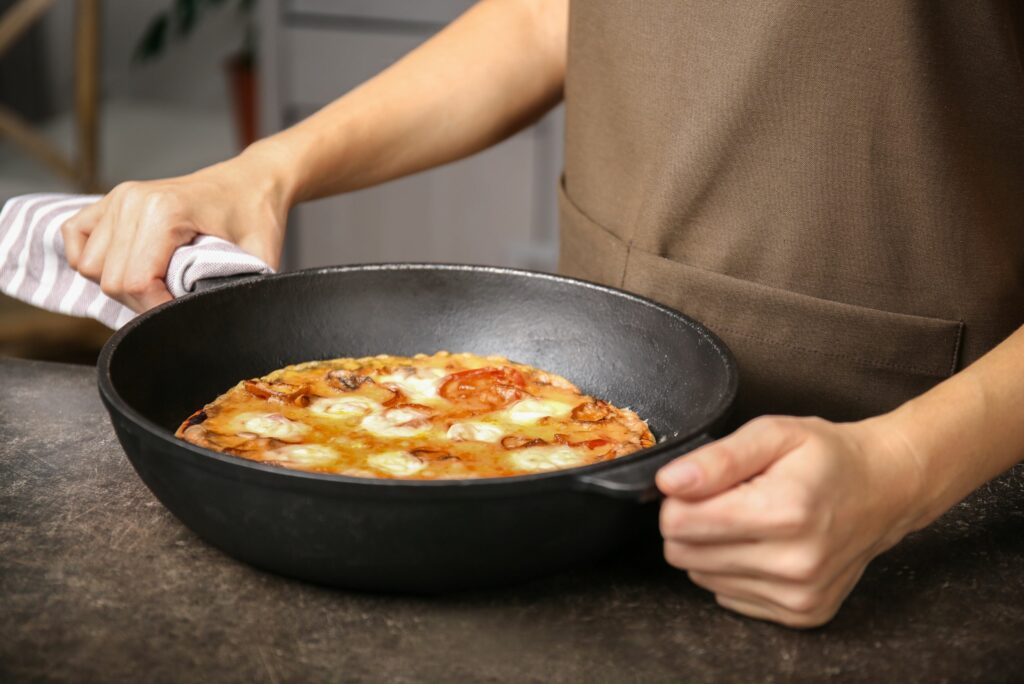
If you don’t have an oven, you can still enjoy delicious homemade pizza using alternative cooking methods. Here are three ways to cook pizza without an oven:
Using a Stovetop
One way to cook pizza without an oven is to use a stovetop. First, heat a skillet or frying pan over medium heat. Roll out your pizza dough and place it in the pan. Cook it on one side until it starts to brown, then flip it over and add your sauce, cheese, and toppings. Cover the pan with a lid and cook until the cheese is melted and bubbly.
Grilling Pizza
Grilling pizza is another great option for those without an oven. Preheat your grill to high heat. Roll out your pizza dough and brush it with olive oil. Place the dough on the grill and cook for a few minutes on each side until it starts to brown. Add your sauce, cheese, and toppings, and continue cooking until the cheese is melted and bubbly.
Using a Toaster Oven
If you have a toaster oven, you can use it to make delicious pizza. Preheat the toaster oven to 425°F. Roll out your pizza dough and place it on a baking sheet or pizza stone. Add your sauce, cheese, and toppings, and bake for 10-12 minutes, or until the cheese is melted and bubbly.
No matter which method you choose, cooking pizza without an oven is easy and delicious. Experiment with different toppings and cooking methods to find your favorite way to make pizza at home.
Post-Cooking Steps
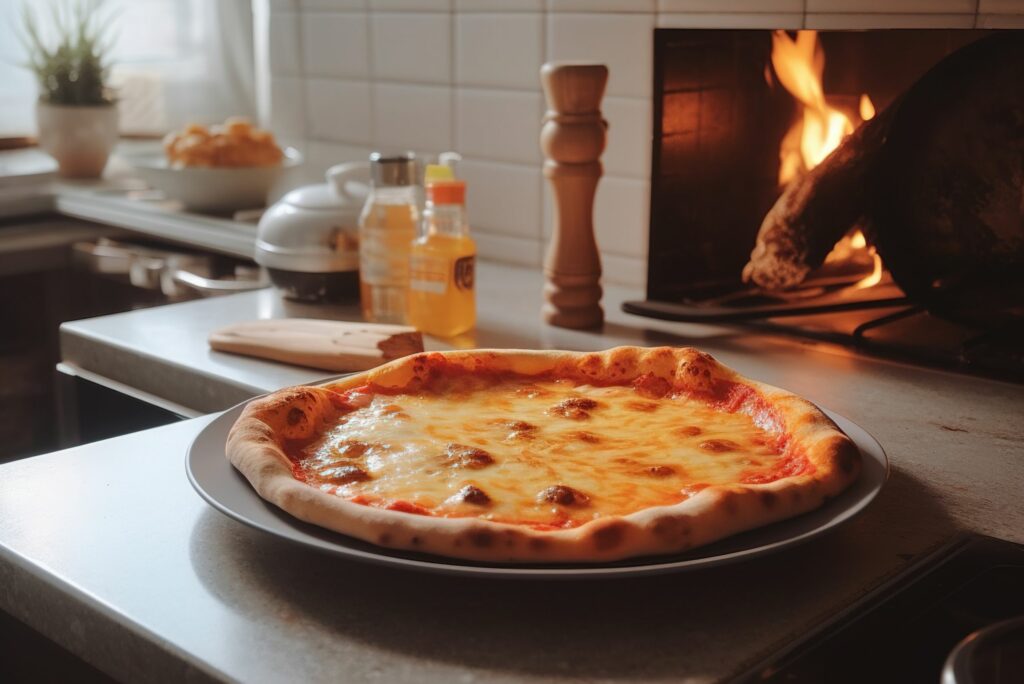
After cooking your pizza without an oven, there are a few post-cooking steps you should follow to ensure that your pizza tastes great and lasts longer. Here are some tips on how to serve, store, and reheat your pizza.
Serving Suggestions
When serving your pizza, you can get creative with toppings and sides. For example, you can add a sprinkle of fresh herbs such as basil, parsley, or oregano to enhance the flavor of your pizza. You can also serve your pizza with a side salad or garlic bread to make it a complete meal.
Another serving suggestion is to cut your pizza into small pieces and serve it as an appetizer at a party or gathering. You can also make mini pizzas by using smaller dough circles and toppings. This is a great way to add variety to your party menu.
Storage
If you have leftover pizza, it’s important to store it properly to prevent it from going bad. The best way to store pizza is to wrap it in aluminum foil or plastic wrap and place it in the refrigerator. This will keep your pizza fresh for up to 4 days.
If you want to store your pizza for longer, you can freeze it. To freeze pizza, wrap it in aluminum foil or plastic wrap and place it in a freezer-safe container. This will keep your pizza fresh for up to 2 months.
Reheating
When reheating your pizza, there are a few methods you can use. One method is to reheat it in the oven. Preheat your oven to 350°F (175°C) and place your pizza on a baking sheet. Bake for 10-15 minutes or until the cheese is melted and the crust is crispy.
Another method is to reheat it in a skillet. Heat a non-stick skillet over medium heat and place your pizza in the skillet. Cover with a lid and cook for 2-3 minutes or until the cheese is melted and the crust is crispy.
You can also reheat your pizza in the microwave. Place your pizza on a microwave-safe plate and microwave on high for 30-60 seconds or until the cheese is melted.
By following these post-cooking steps, you can enjoy your pizza without an oven and ensure that it stays fresh and delicious.
Conclusion
Cooking pizza without an oven is not only possible, but it can also be a fun and creative way to enjoy this classic dish. Whether you use a skillet, grill, or stovetop, there are several methods to try that can produce delicious results.
One of the benefits of making pizza without an oven is that it allows for more flexibility in terms of toppings and crusts. You can experiment with different types of dough, sauces, and toppings to create a pizza that suits your tastes and preferences.
Another advantage of cooking pizza without an oven is that it can be a great option for those who don’t have access to a traditional oven or who are looking for a more energy-efficient way to cook. Using a countertop electric oven or a stovetop method can help save on energy costs while still producing a tasty pizza.
However, it’s important to keep in mind that cooking pizza without an oven may require some trial and error to find the method that works best for you. It may take some practice to get the temperature and timing right, but with a little patience and experimentation, you can create a pizza that rivals those made in a traditional oven.
Overall, cooking pizza without an oven is a great way to get creative in the kitchen and enjoy a delicious meal. Whether you’re cooking for yourself or for a group, there are several methods to try that can produce tasty and satisfying results.


